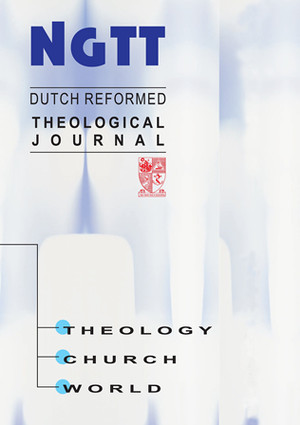The contextual Jesus and the covenant as continuous challenges to ethnicity
DOI:
https://doi.org/10.5952/53-0-196Abstract
This contribution deals with the themes of the contextual Jesus and the covenant under the heading of the inclusiveness-exclusiveness dilemma. The intention of the emphasis on the contextual Jesus can never be to restrict him to a specific culture. Jesus can only be “at home” in a specific culture if he also, simultaneously, transcends that culture. This transcendence has everything to do with the recognition that there are important features in the contextual Jesus that transcend that specific context as well. In Reformed theology, covenant, prophetism, and kingdom belong together. The covenant does not lead to the striking of a bargain with God in favour of nationalist or ethnical self-interest, but it is “a strategic covenant” aimed at the application of the norms of the kingdom of God. The exclusiveness of the covenant, agreed upon in a specific situation with a selected group, does not exclude but includes so-called “outsiders”. This element of inclusiveness belongs to the very essence of the biblical concept of covenant.Downloads
Published
2012-11-07
How to Cite
Brinkman, M. (2012). The contextual Jesus and the covenant as continuous challenges to ethnicity. NGTT | Nederduitse Gereformeerde Teologiese Tydskrif, 53(Supp 1). https://doi.org/10.5952/53-0-196
Issue
Section
Articles | Artikels
License
Copyright of all NGTT material belongs to the Pieter de Waal Neethling Trust (PDWN Trust). The PDWN Trust is a trust fund established in 1932 with the aim of promoting quality theological research and publications.
The PDWN Trust pledges to maintain a legitimate scholarly record of the author's work and to defend the author's article against plagiarism and copyright infringement.
The PDWN Trust is committed to full Open Source publishing. This means that all articles published in NGTT will gradually be made freely available online. Authors maintain the right to:
- Share and self-archive their work.
- Make printed copies of their article for educational use.
- Present their article at a meeting or conference and distribute printed copies of the article
- Adapt and expand their published journal article to make it suitable for their thesis or dissertation.
- Republish the article (ensuring that the original article is cited as published in NGTT).
For any questions or queries in this regard, please contact the Editor.


